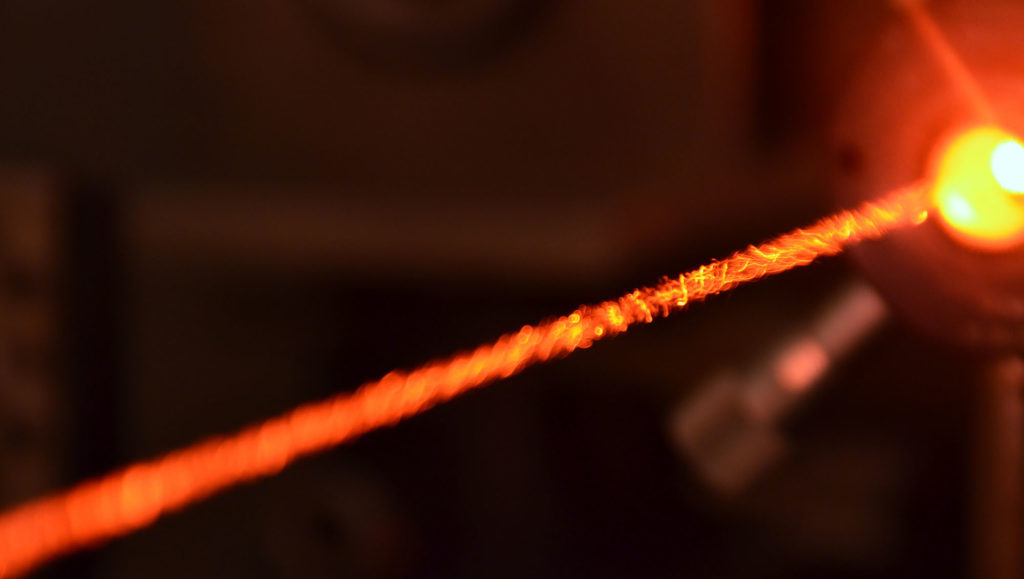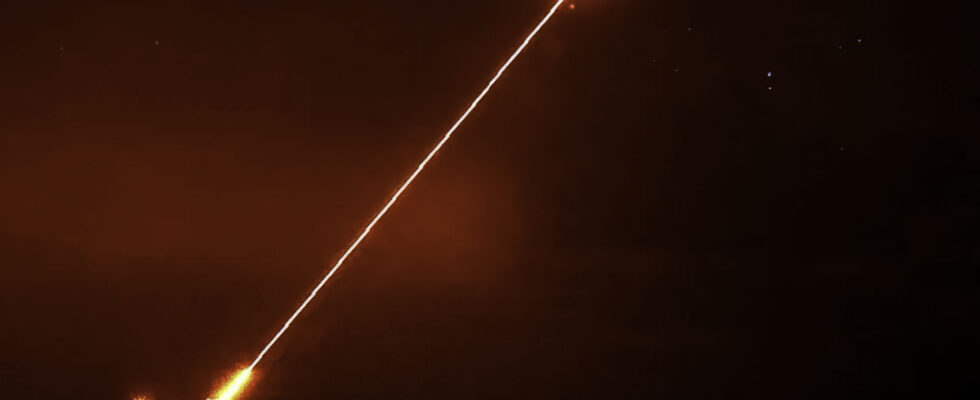A test firing of the British anti-drone system, the DragonFire, took place successfully in January 2024. This system is seen as an ideal solution for destroying drones without spending too much money, unlike a missile.
A flash of light flies towards a tiny drone flying at breakneck speed. A few moments later, the deactivated drone crashes into the sea. Not a sound, no human victims, no disorderly explosions. A deadly multi-million dollar drone was cleanly taken out in a shot that cost less than a fine bottle of wine.
If you think this is a scene from a science fiction movie, think again. Just a few days ago, a team of British scientists and engineers managed to demonstrate that it is a viable technology, which could find its way onto the battlefield in five or ten years.
DragonFire is a high-tech program launched in 2017, funded to the tune of £30 million, and involving the UK government agency Defense Science and Technology Laboratory, missile manufacturer MBDA, aerospace company Leonardo UK and QinetiQ defense technology. This program successfully completed its first field test by shooting down several drones off the coast of Scotland using laser beams.

Drones are unmanned, semi-automatic aircraft capable of inflicting lethal damage with high precision. They are very present on modern battlefields, notably during the Ukrainian War and on the naval trade routes of the Red Sea.
It is not easy to shoot them down: you usually have to fire missiles that cost up to £1 million each (around €1.18 million). Although generally effective, defensive systems of this type are expensive and carry a significant risk of collateral damage. If a missile misses its target, it will eventually land somewhere and explode anyway.
But you don’t need to cause a spectacular explosion to disable a drone… just interfere with its control and navigation systems.
And a laser beam is a very good candidate for this task. Lasers are particularly directional beams of light, which can be very intense. A sufficiently powerful laser can interfere with any electronic device and cause it to malfunction.


The laser has obvious advantages over a missile
Compared to conventional missiles, a high-power laser system has many strategic advantages. For starters, it’s surprisingly inexpensive to use: running the DragonFire for ten seconds costs as much as turning on a heater for an hour (i.e. less than 12 euros per shot).
Lasers also pose no risk of collateral damage. Even if a laser misses its target, it will continue to propagate in the same direction and will eventually be absorbed and scattered into the atmosphere. A laser being a beam of light, it propagates in a straight line, independent of gravity. Finally, the section of a laser beam is generally very small, of the order of a few square millimeters. Their use here is similar to a surgical intervention.


Lasers are therefore a defensive weapon par excellence: they can respond to a threat, but cannot cause significant damage. They are also very insensitive to countermeasures, since the light beams travel at the highest speed possible… that of light. In other words, once a laser flash is fired, nothing can catch up and neutralize it.
Laser beams have been used on the battlefield for some time. On the defensive side, they are mainly used for target tracking, remote sensing and precision aiming. But this is the first time that they have been used effectively to disrupt enemy action.
The atmosphere and the weather: the two main concerns for an effective defense laser
The development of DragonFire as a weapon took a long time. This is because to neutralize a drone, you need a laser beam of great intensity.
But if the laser beam is too powerful, it can strongly interact with the air in the atmosphere, causing it to be absorbed or dispersed. The perfect balance must be found between beam parameters, such as its power, wavelength and shape, to ensure that it can propagate long distances without significantly degrading.
A laser beam is also particularly sensitive to atmospheric conditions, and the presence of fog, rain or clouds can significantly affect its performance.
Drones and subsonic missiles represent a growing threat globally. This is why the British Ministry of Defense is currently accelerating the development of DragonFirehoping to put it on warships in the next five to ten years.


To do this, several technical and scientific questions still need to be resolved.
For example, it is not easy to maintain laser pointing stability on a moving platform (like a cruiser in rough waters). It’s like trying to hit a dartboard while standing on a balance board – but this only affects the accuracy of the weapon, not the risk of collateral damage.
It will also be necessary to decouple the performance of the laser system from the weather conditions. As water droplets and air currents can scatter or absorb the laser beam, and reduce its power, and therefore its effects, weather conditions should be taken into account when preparing the beam. This task is not impossible, but technically difficult.
A training program must also be put in place so that soldiers can effectively use such a high-tech system.
Nevertheless, these first tests demonstrated the viability and effectiveness of this laser weapon, which could revolutionize modern warfare in the years to come.




Gianluca Sarri, Professor at the School of Mathematics and Physics, Queen’s University Belfast
This article is republished from The Conversation under a Creative Commons license. Read the original article.
If you liked this article, you will like the following: don’t miss them by subscribing to Numerama on Google News.
